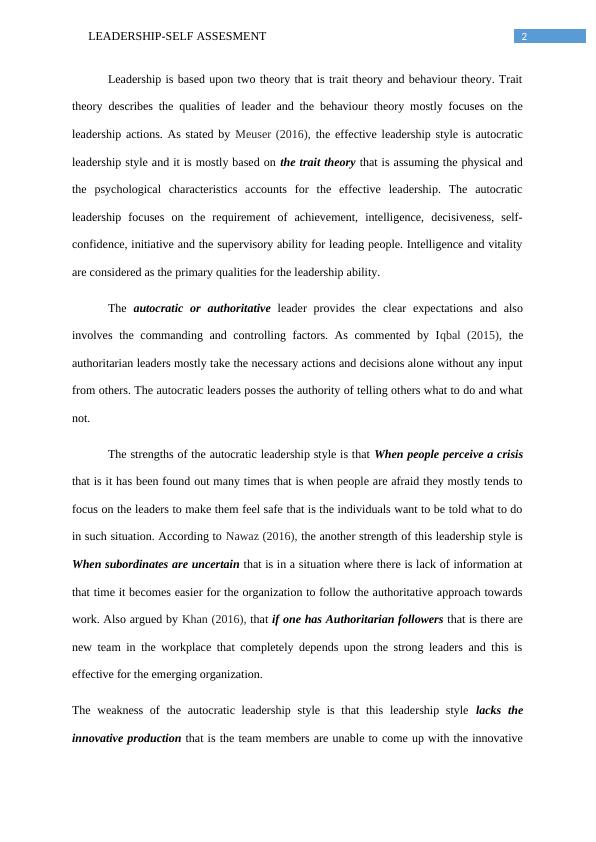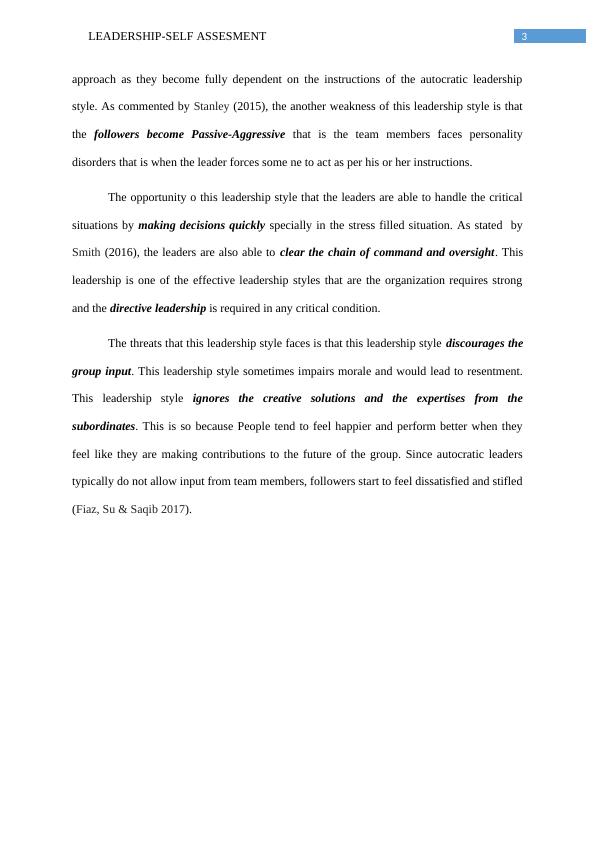Leadership-Self Assessment: Autocratic Leadership Style
Analyse your own personal leadership style and discuss its strengths and weaknesses in various contexts - personal and work-related - and identify the potential challenges and opportunities of your leadership style.
6 Pages1225 Words322 Views
Added on 2023-04-25
About This Document
This article discusses the autocratic leadership style and its strengths, weaknesses, opportunities, and threats. It also provides a self-assessment of the leadership style from the student's aspect.
Leadership-Self Assessment: Autocratic Leadership Style
Analyse your own personal leadership style and discuss its strengths and weaknesses in various contexts - personal and work-related - and identify the potential challenges and opportunities of your leadership style.
Added on 2023-04-25
ShareRelated Documents
End of preview
Want to access all the pages? Upload your documents or become a member.
Leadership and Management Theories
|12
|3786
|231
Reflective Journal on Concept of Leadership
|6
|2224
|265
Examination of Leadership Style
|7
|715
|211
Leadership in Business
|11
|2148
|95
Essay | Self Reflection on Leadership Development
|12
|2603
|1676
Leadership Development Opportunities in the Future - Essay
|8
|2896
|18



